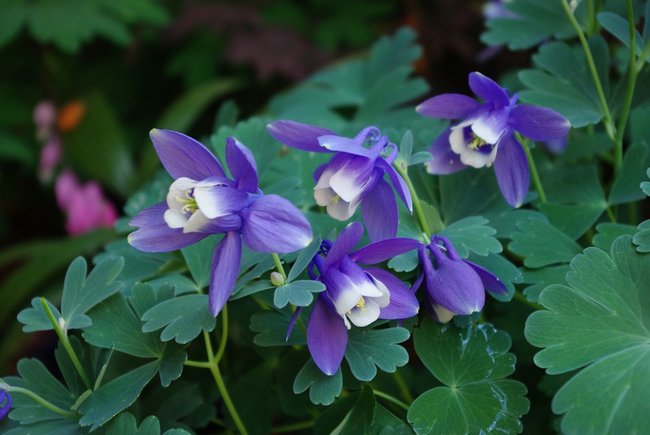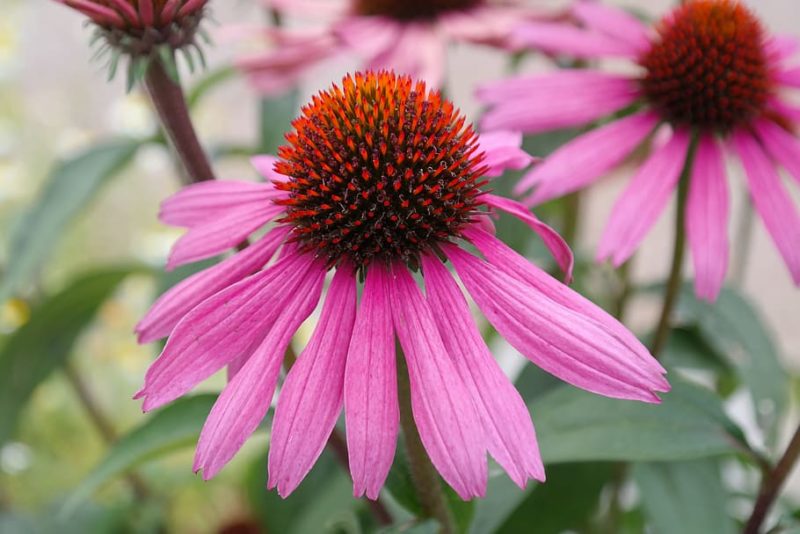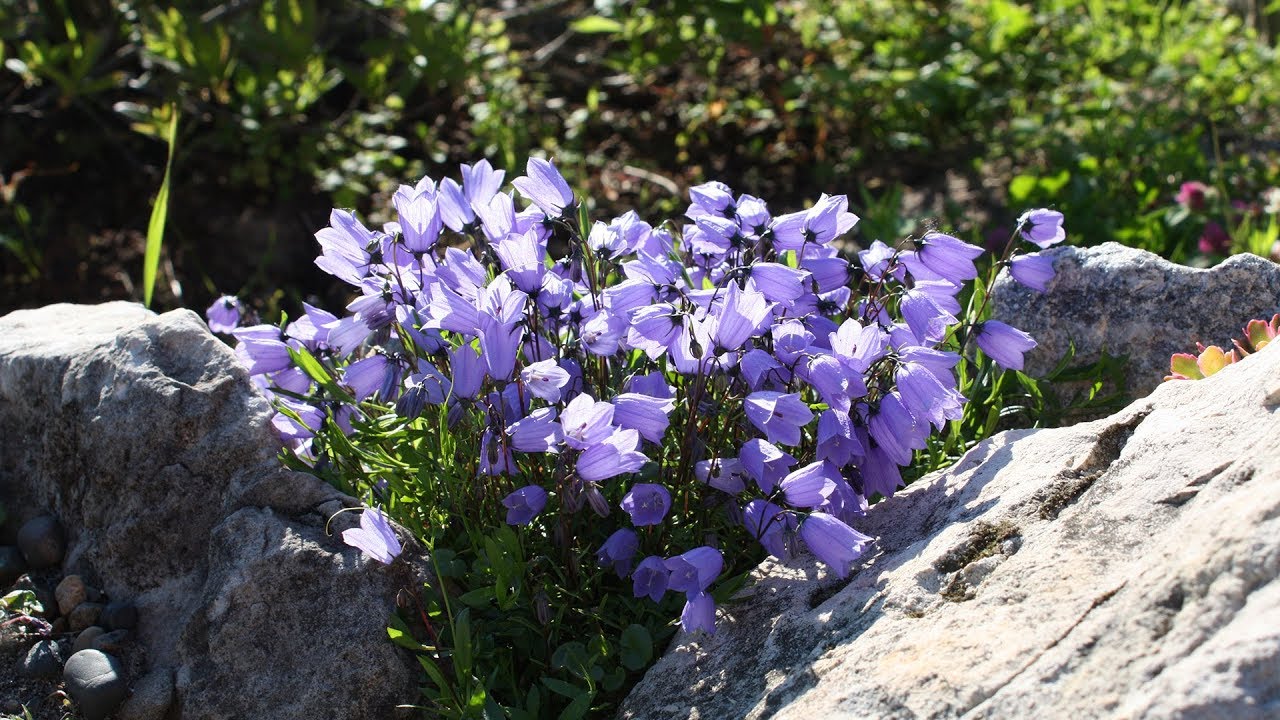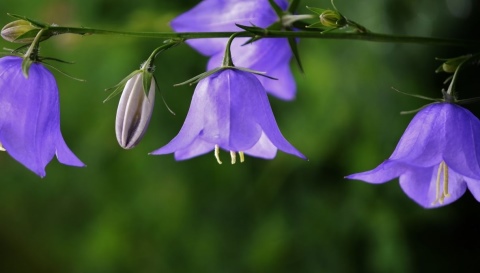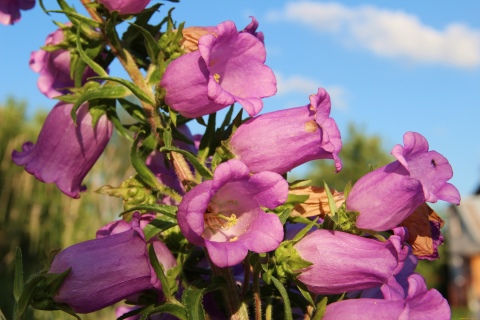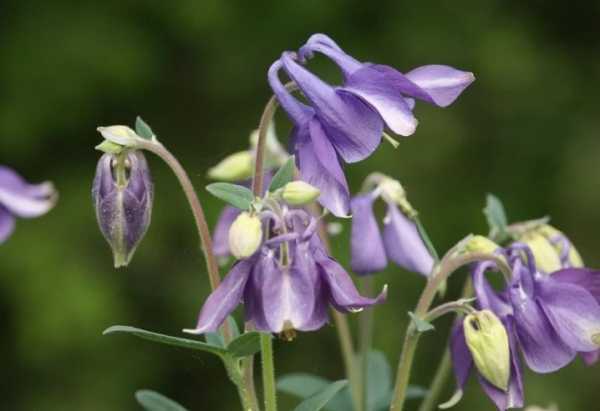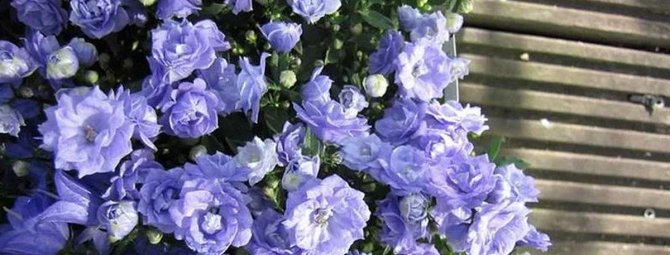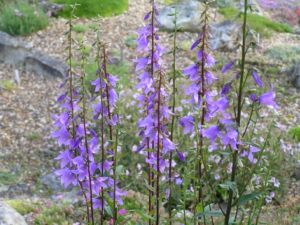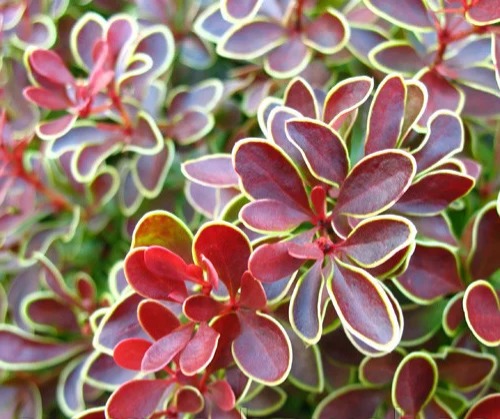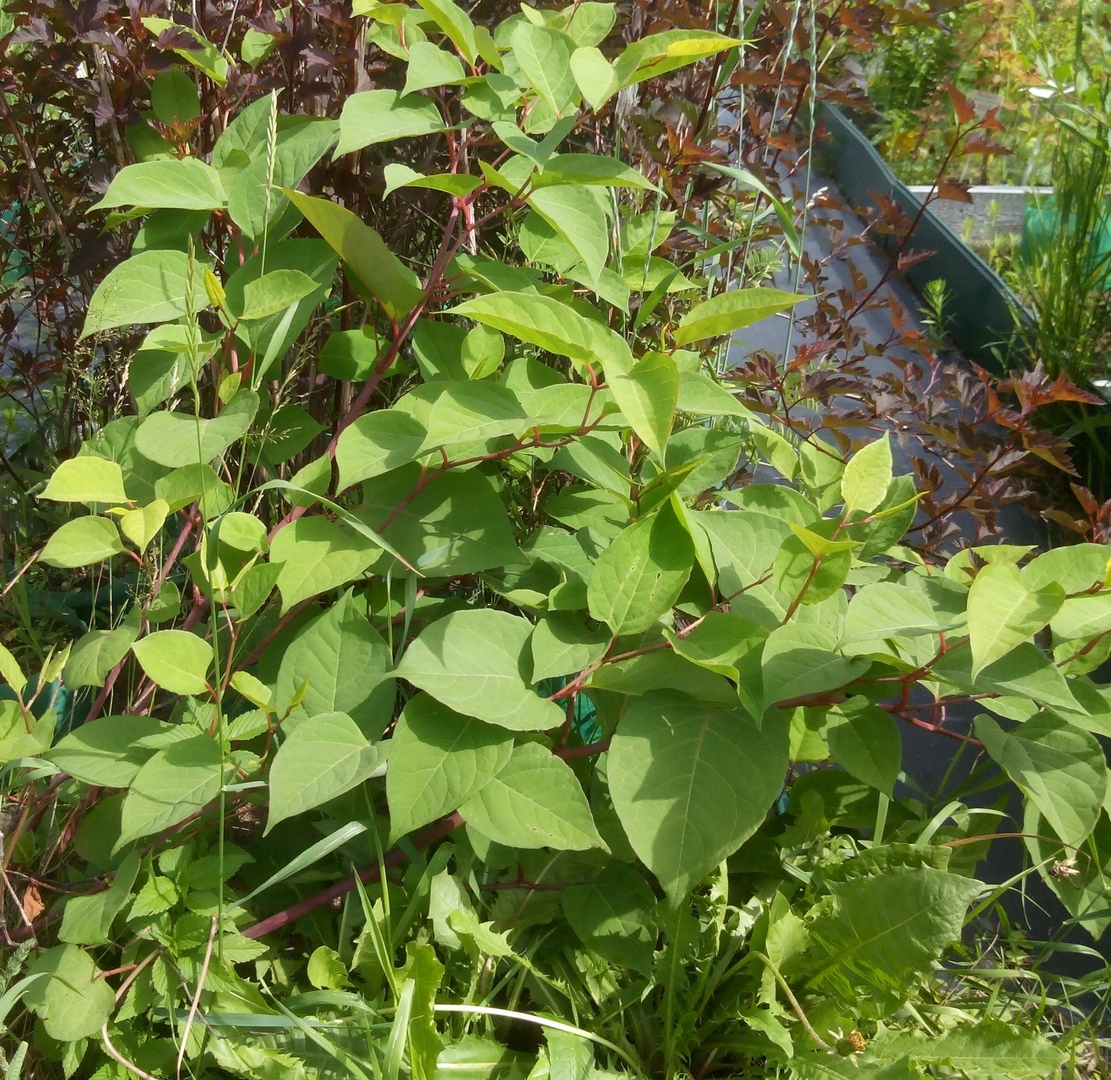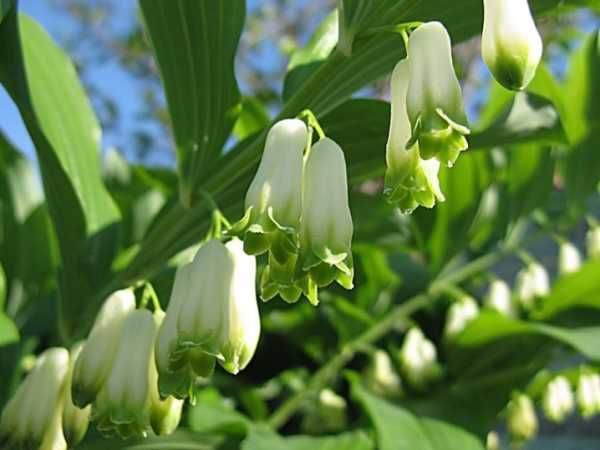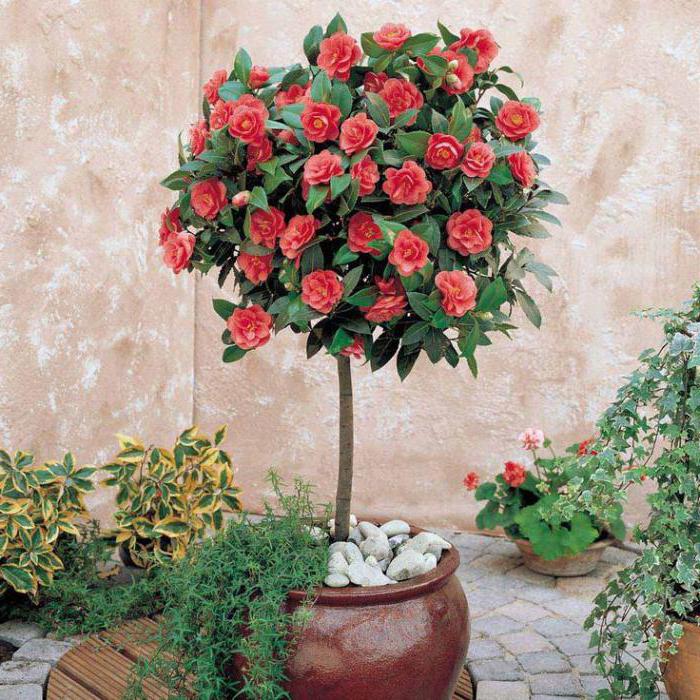Peculiarities
Bells are familiar to many from childhood. This adorable sweet plant resembles a miniature bell. This culture also has another name - campanula. The natural shade is blue. However, thanks to the work of breeders, today it is possible to plant white, pink, purple, lilac, red, spotted and even two-color bells in the garden.
The main feature of the culture is a long growing season. By appearance, they are divided into summer green and winter green. In the first, vegetation begins in early spring (at an average temperature of +5 degrees) and lasts until late autumn, until the first frost occurs. The latter retain their vegetation all year round. So, with the onset of cold weather, such species can be placed in a warm room. The flower will not only preserve the green mass, but will bloom in March or April.
Campanula lifespan depends on their variety. Annuals and biennials are more common. Perennial herbaceous plants can live for about 6–8 years. There are not many species that can live for more than 20 years (for example, the lacto-flowered).
Types of bells and their names
There are approximately 300 types of bells in the world. Consider the varieties most popular among gardeners.
Broad-leaved bell (lat.Campanula latifolia)
One of the tallest types of bells, the stems of which reach one and a half meters in height. Large serrated leaves are unevenly distributed over the stems; in their axils, there are blue, white or lilac bluebells brushes up to 6 cm long.
Prefers moist soils and partial shade, found in the wild. The transplant of an adult plant does not tolerate well. Terry flower forms can be found in gardens. In Russia, the most common varieties are Alba, Brantwood.
Milk-flowered bell (Latin Campanula lactiflorа)
Tall plant (up to 150 cm), found in the mountains of the Caucasus and Asia. The stem is powerful, highly branched in its upper part. The flowers are white or purple, 3-4 cm in diameter, collected in large inflorescences.
Prefers sunny places, multiplies by sowing seeds. The most popular varieties are Coerulea and Loddon Anne.
Nettle-leaved bell (lat.Campanula trachelium)
The stem is reddish in color, up to one meter high, covered with hairs. Single flowers of white, blue or purple color are located in the axils of the upper leaves on short pedicels.
The plant prefers shady moist soils of forests and ravines. The variety is undemanding to the composition of the soil, winter-hardy, hygrophilous. Does not tolerate transplanting, but easily reproduces by self-seeding.
Carpathian bell (lat.Campanula carpatica)
It got its name from the mountains, at the foot of which it is often found in nature. Plant height 30-35 cm; branching, herbaceous stems and large, up to 5 cm flowers distinguish this species.
The easiest way to propagate a Carpathian bell is from seed, but you can also use cuttings and dividing the bush. The most popular variety is White Star.
Point bell (lat.Campanula punctata)
(6.Elizabeth Dot Bell)
In our country, it occurs naturally on the banks of forest rivers, in the Far East. A compact, branching plant up to 50 cm tall with large (5-6 cm) white, blue, lilac flowers. The corolla of the flower is pubescent, covered with burgundy dots.
A point bell, planting and caring for which does not require much effort, is perfect for alpine slides and flower gardens in a natural style.
Types and varieties of garden flowers bells (with photo)
Tall varieties of garden bells include plants that form bushes above 40 cm:
Nettle-leaved bell (C. trachelium) - height 40-80 cm, flowers are white, blue-violet, collected in a brush, plants of deciduous forests of Eurasia.
Milk-flowered bell (C. lactiflora) - height 80-120 cm, flowers are white, lilac, lilac, collected in a wide-pyramidal inflorescence, numbering up to 100 flowers, plants of the subalpine meadows of the Caucasus.
Peach-leaved bell (C. persicifolia) - height 70-90 cm, flowers are broadly bell-shaped, white, blue, sometimes double, collected in a rare brush, grows on sandy soils in pine forests of Eurasia, juvenile.
Crowded bell (C. glomerata) - has the shape of tall (up to 100 cm) and undersized (20-30 cm), flowers are white, blue or dark purple, collected in a multi-tiered inflorescence. Widely distributed in meadows, forest glades and in the steppes of Eurasia, undemanding in culture.
Broad-leaved bell (C. latifolia) - height 100-150 cm, large flowers (up to 6 cm long) in a long inflorescence-brush, grows in the alpine meadows of the Caucasus, Altai, Europe.
As you can see in the photo, bell flowers can have double inflorescences of white, blue, lilac:
Low-growing varieties:
Carpathian (C. carpatica) - white and blue flowers.
Gargan (C. garganica) - 10-15 cm tall, grows in compact "pillows", the flowers are star-shaped, gray-blue, a plant of the limestone rocks of the Mediterranean.
False-leaved (C. cochleariifolia = C. pusilla) - forms creeping thickets 5-12 cm high, flowers are small, drooping, in a loose inflorescence, white or violet-blue, grows on the calcareous rocks of Europe.
Pozharsky's bell (C. poscharskyana) - forms cushion-shaped bushes 15-20 cm high, flowers are wide-open, star-shaped, lavender, grows on limestone rocks of southern Europe.
Bell of Portenschlag (C. portenschlagiana) - a low (5-10 cm) bush with bluish-purple bells, a plant of the rocks of Europe.
Spotted bell (C. punctata) - 20-25 cm high, bushes with a rare brush of pink flowers with dark dots inside, grows in sparse mountain forests of the Far East.
Hyacintoides
Hyacintoids are bulbous perennials that are early flowering plants. There are also other names: "Spanish curl", "Spanish endymion", "Spanish scilla" and "wild hyacinth".
This is an unpretentious culture that can often be found in flower beds and personal plots. The plant has basal leaves 20-30 cm long and a single peduncle reaching a height of up to 30 cm.
The hyacinth can have lilac, white, pink, blue or blue bell-shaped flowers 1.5-2 cm in diameter. The culture blooms in late May or early June, and this period lasts up to 20 days.
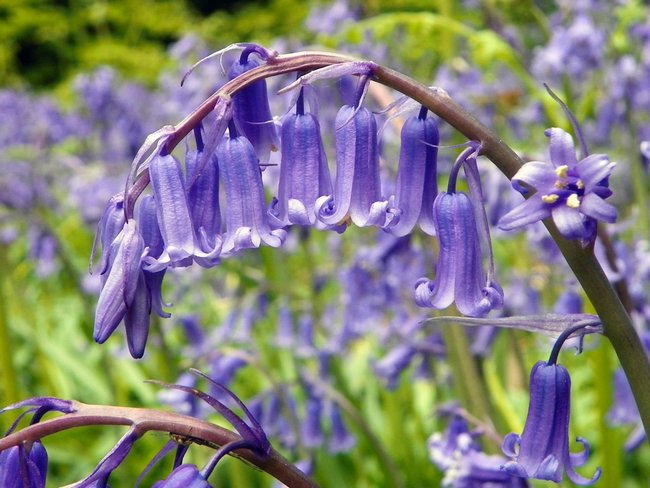
Bellflower milky-flowered planting and care
5 advantages of planting a milk-flowered bell in the country. Plant care.
Bellflower milky-flowered - the name of the plant in Latin Campanula lactiflora ”- differs from its counterparts by an unusually long stem and different shades of its inflorescences. It can reach about one and a half meters in height, while maintaining durability. There are milky-flowered bells of such shades. blue, pale purple, pale yellow and blue shades, pure white inflorescences. The bell inflorescence is framed by double-serrate leaves. Inflorescences often grow in such a way that, in appearance, the milk-flowered bell can be attributed to the paniculate type of inflorescence. Natural habitat - mountainous and wooded areas of the Caucasus region.
You can purchase several varieties of milk-flowered bell and plant them on your site. The four most popular varieties - Alba, Loddon Anna, Poof, Pritchard, White Poof - practically do not differ from one another, although there are some differences in appearance.
It is worth noting that Alba produces pure white inflorescences, while Loddon Anna produces purple flowers. The pouf is considered a dwarf milk-flowered bell - it reaches only 20-30 centimeters in height. Its inflorescences have a color similar to lavender, often pronounced blue shades are found. Pritchard is a tall, milk-flowered bell. It reaches up to 75 centimeters in height. It has very beautiful inflorescences of a deep purple hue with a cold blue undertone. White Poof is an analogue of a dwarf Poof.This variety is only 25 centimeters tall and has pure white inflorescences.
Planting a milk-flowered bell
A bell is planted on the site using cuttings. This is a special type of breeding that is not costly in terms of efforts, available to everyone. In order to start it, it is necessary to find the mother plant of the milk-flowered bell of the required variety, cut the stalk in the spring and plant it in the ground.
The stalk of the bellflower must be:
- up to ten centimeters long;
- at the end have a heel, that is, a part of the stiffened bark from the stem of the mother plant;
- have several leaves on the upper part of the cutting, while the lower part is completely trimmed.
Caring for the milk-flowered bell after planting
The stalk goes deep into the soil substrate by half. Due to the fact that there is at least some grown mass on the surface, the stalk develops quite quickly. In total, the lifespan of the milk-flowered bell is up to seven years, after which it is necessary to renew the flower bush. To do this, they dig it out, examine the roots, cut it off if necessary, then cut off the shoots on the green part of the bush, and transplant the plant to a new place with nutritious, fresh soil.
Planting the milk-flowered bell is carried out in an open place, which is well lit by the sun. The substrate for this flower must be used in a slightly acidic reaction and well-drained. The nutritional value of the soil is inferior to its structure. Water the milk-flowered bell in moderation, waiting for the soil mixture to dry out a little from the moment of the last moistening. They are fed with mineral fertilizers that support the slightly acidic reaction of the soil during the ripening of the inflorescences and the subsequent flowering of the bell.
Please rate the material you have read :)
(No ratings yet. Be the first!) Loading.
Annual bells
This variety is chosen by those gardeners who prefer to design their garden plot differently every year. Annuals are not inferior to perennials in attractiveness, they are short, but they leave room for creativity for the next season.
Dichotomous
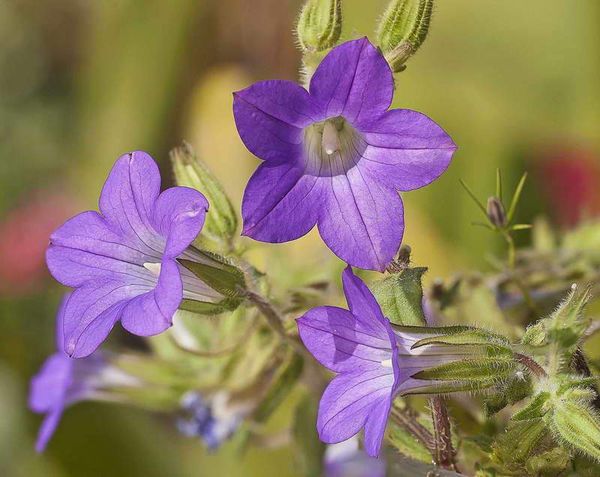 Dichotomous bell from the Western Caucasus
Dichotomous bell from the Western Caucasus
The plant came to us from the Western Caucasus. The culture has a modest size - only 15–20 cm in height, but it is distinguished by lush flowering. The flowers are small and have a pleasant light purple color. This form is characterized by the presence of numerous broadly ovate leaflets. Due to its low growth and spreading, this plant is often used as a ground cover.
Kashmiri
 Bell of Kashmir from the Himalayas
Bell of Kashmir from the Himalayas
The homeland of this variety is the distant Himalayas. The culture is dwarf - the bushes do not grow taller than 6–8 cm. Such modest sizes are more than compensated by the multitude of flowers, their size (each flower reaches 1.5 cm) and bright purple color, as well as a long flowering period.
Long bar
 Long-columnar bell was discovered in the Caucasus
Long-columnar bell was discovered in the Caucasus
The plant was first seen in the Caucasus. Prefers to grow in cracks in rocks, on gravelly soils. The culture is tall - each bush reaches 50 cm. The bushes are spreading, strongly branching. Such a bush blooms for a long time - from early May to mid-July. The inflorescences form decorative panicles, each with 50–55 flowers. The diameter of each flower varies within 4 cm. They differ in bright purple color and the correct bell-shaped shape.
Mirror of Venus
 Bell Mirror Venus
Bell Mirror Venus
The native land of this variety is the Mediterranean mountains, where its cultivation began more than 500 years ago. Bushes grow up to 25-30 cm, form voluminous inflorescences in the form of panicles from numerous medium-sized (up to 2 cm) flowers. The flowers are painted in a pleasant blue color with a slight lilac tint, and are distinguished by a whitish center.
Flowering is very long: the culture blooms in early May and pleases with flowering until the end of summer. It is noteworthy that the Mirror of Venus is not only blue - breeders also know white varieties.












